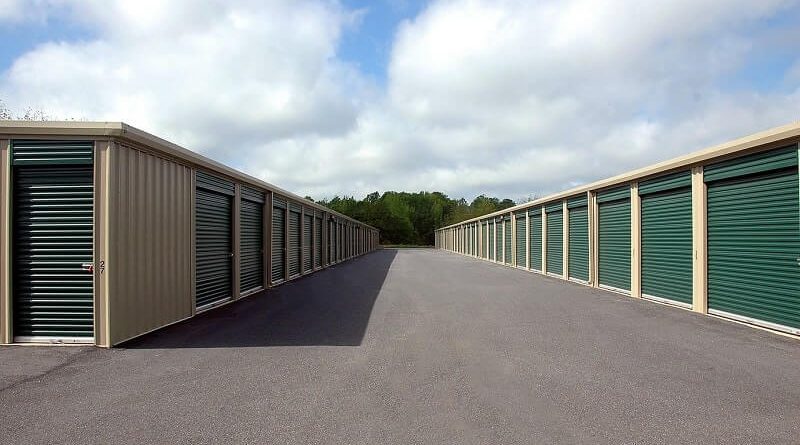Rodents such as rats and mice can damage your furniture, irreplaceable heirlooms, artwork, and other belongings if they manage to get inside your storage unit. The damage is likely to be more severe if the storage facility doesn’t take concrete steps to keep pests out and the furniture is stored for a long duration. Here in this post, we will discuss ways to protect the furniture in storage from mice and rats.
Inspect and Prepare Your Storage Unit
Before you move in the furniture, perform a thorough inspection of the empty unit. Gaps, holes, and cracks, if any, can allow rats and mice to get inside the storage unit. Rats and mice can squeeze in through cracks and crevices the size of a nickel.
Storage unit inspection and preparation checklist:
- Seal all potential rodent entry points with steel wool; use caulk to keep it firmly in place
- Remove debris, cardboard boxes, papers, pieces of fabrics, etc. as rats and mice can use them to build nests
- Place cotton balls soaked in peppermint oil, an excellent rodent repellant, near the door and under the furniture
- Use a bug spray to create a barrier for the rodents; check with the storage facility if they allow this.
- Sweep the floor clean.
- Use wooden or steel pallets to keep furniture items elevated a few inches off the floor to deter rodents from nesting.
If the storage facility does not provide pest control, you can hire rodent control specialists to inspect and treat a storage unit before you move in the furniture and other belongings.
Do Not Store Food with Furniture Items
Storing food items in a storage unit, along with furniture and other belongings is a bad idea. It’s like handing out a formal invitation card to rats and mice to invade your storage unit and ruin your belongings. The smell of food, fresh or rotten, can motivate hungry critters to find ways to get inside a storage unit.
Storing human food, pet food, bird seeds, etc. in a storage unit may also be in violation of the terms of the lease contract.
If you need to store kitchen utensils with furniture items, make sure they are properly cleaned. Remove traces of food, stains, etc. before you move them into a storage unit.
Wrap Upholstered Furniture Items in Plastic Sheets
Rats and mice can easily chew through fabrics with their sharp, incisor teeth. The rodents also love to nest inside upholstered furniture or use shredded fabrics for building cozy nests in a storage unit.
So, it is advisable to use heavy-duty plastic sheets to wrap up upholstered furniture items, mattresses, and cushioned chairs. Rats and mice cannot chew through such sheets.
Use breathable material for wrapping stuffed chairs, cushions, couches, etc. Avoid covering furniture items too tightly with cloth, plastic or any other material to eliminate the possibility of moisture buildup.
Inspect Furniture in Storage on a Regular Basis
The storage facility staff may regularly inspect empty units and surrounding areas for mold, moisture, and rodents. However, most storage lease contracts forbid the staff from opening units that are in use. Therefore, you will need to personally inspect your storage unit on a regular basis. If you cannot visit the facility yourself, have someone else do it for you.
A monthly or quarterly visit will help ensure that rodent infestation, if any, is identified and treated at an early stage.
Listed below are some of the most common signs of a rodent infestation in a storage unit:
- Gnaw marks on plastic boxes, storage containers, wooden items, pallets, plastic sheets, or the door.
- Presence of rodent droppings inside the storage unit
- Urine trails or tracks along the walls
- Presence of shredded nesting material (cardboard, fabrics, paper, clothes, etc.) in and around furniture items in storage
- Foul odor
Alert the staff at your storage facility immediately about the situation if you notice any of these signs of rodent infestation. You can also hire a rodent control specialist to treat your unit.
Final Words
Avoid storing furniture in a facility that does not seem to be serious about pest control. Lack of sanitation, presence of garbage, dilapidated door frames, and overgrown vegetations nearby indicate that the storage facility is not bothered about keeping rats and mice out.
Even the best-kept storage facilities will have occasional problems with pests. So, it is a good idea to buy stored property tenant insurance, especially if you are storing expensive furniture and heirlooms for an extended period of time.
Even when you know how to protect the furniture in storage from mice and rats, the pests may still get in. If you suspect a rodent infestation in your storage unit, address the problem immediately. Once inside a secluded area, rats and mice can rapidly multiply in number.









